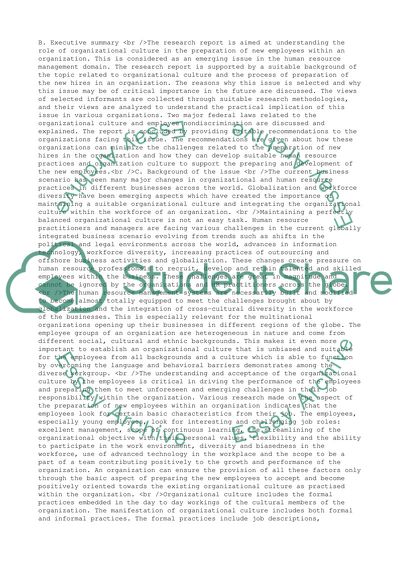Cite this document
(The Role of Organizational Culture and Preparing the New Employee Research Paper - 1, n.d.)
The Role of Organizational Culture and Preparing the New Employee Research Paper - 1. Retrieved from https://studentshare.org/management/1644596-organizational-culture-and-preparing-the-new-employee
The Role of Organizational Culture and Preparing the New Employee Research Paper - 1. Retrieved from https://studentshare.org/management/1644596-organizational-culture-and-preparing-the-new-employee
(The Role of Organizational Culture and Preparing the New Employee Research Paper - 1)
The Role of Organizational Culture and Preparing the New Employee Research Paper - 1. https://studentshare.org/management/1644596-organizational-culture-and-preparing-the-new-employee.
The Role of Organizational Culture and Preparing the New Employee Research Paper - 1. https://studentshare.org/management/1644596-organizational-culture-and-preparing-the-new-employee.
“The Role of Organizational Culture and Preparing the New Employee Research Paper - 1”, n.d. https://studentshare.org/management/1644596-organizational-culture-and-preparing-the-new-employee.


